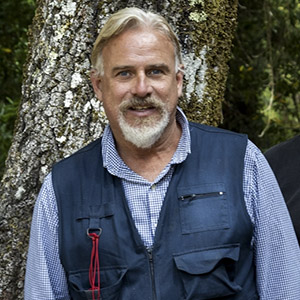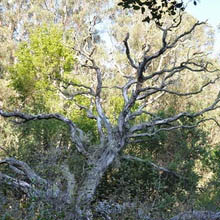Link here for Dr. Garbelotto’s resume
News article about our research
Research Areas
- EXOTIC FOREST DISEASES: we are interested in uncovering the mechanisms behind invasions by exotic forest pathogens, and we use molecular tools to understand their biology, ecology, and epidemiology. We are currently working on Sudden Oak Death, Phytophthora cinnamomi and Pine Pitch Canker in California, and on Cypress Canker and Heterobasidion invasions in Europe.
- FUNGAL ECOLOGY: we are using beneficial and pathogenic fungi as model systems to understand issues of isolation by distance, island bio-geography and community structure in relations to habitat size and age. We have projects in Central American mangroves, Matsutake mushrooms worldwide and Truffles in Europe.
- BIODIVERSITY and ALL TAXA INVENTORIES: we are interested in describing biodiversity and conservation of natural resources: the two major projects are BARCODING THE VENICE FUNGAL HERBARIUM and BIOCODE (Fungi) in the island of Moorea. We also use population genetics and phylogeographic studies to highlight how genetic diversity is structured (and ought to be maintained) within species.
- MOLECULAR DIAGNOSTICS, GENOMICS: our lab is at the forefront of testing the efficacy, sensitivity and reliability of new diagnostic tools for the detection and study of forest diseases. We are also involved in the genomic unraveling of two fungi: Phytophthora ramorum and Heterobasidion irregularis (H. annosum).
- MANAGEMENT OF FOREST DISEASES: we are studying the efficacy and longevity of direct chemical controls on forest diseases, with an emphasis on phosphonates because of their absence of environmental side effects. We are also interested in learning how horticultural (e.g. pruning, composting) and silvicultural (e.g. thinning) approaches may affect the epidemiology and impact of forest diseases. We are interested in detecting possible natural resistance or tolerance to Sudden Oak Deaths in oaks, tanoaks and California Bay laurel.
- NATIVE FOREST DISEASES and INTERACTIONS WITH INSECTS: we are interested in relationships between the airspora and infection by root rot organisms, on the effects of stump creation on root rots and on the role played by insect in vectoring vascular diseases such as blackstain root disease.













